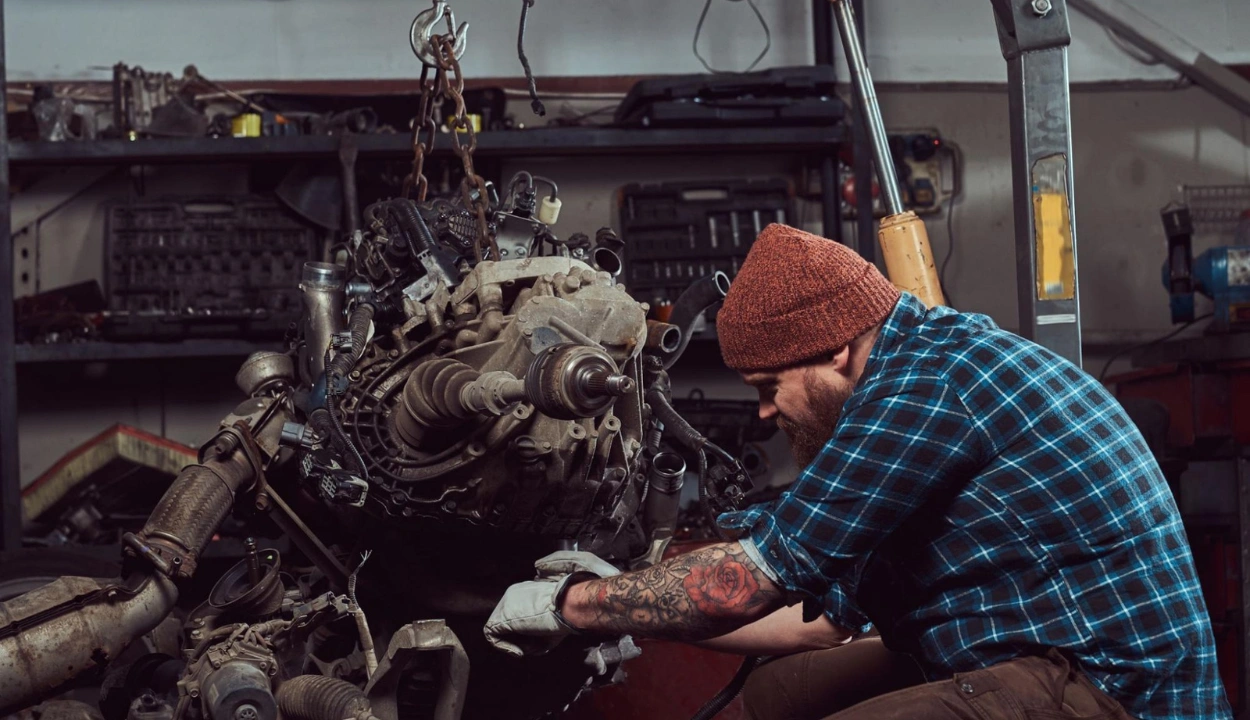Most Effective Heavy Construction Equipment Maintenance Tips
Heavy equipment are the backbone of the construction and industrial sectors.
This heavy machinery, such as bulldozers, excavators, cranes etc perform various tasks.
Due to these tasks, machinery requires repair and maintenance. Heavy machinery maintenance is crucial for efficient operations.
Now a question arises: How should heavy equipment maintenance be carried out?
If you are asking the same questions, this blog is for you.
We will discuss heavy construction equipment maintenance tips in detail and will not leave stone unturned.
10 Best Heavy Construction Equipment Maintenance Tips
Here are a few heavy construction equipment maintenance tips to help you keep your equipment maintained and operational.

1. Know Your Equipment
To provide effective heavy construction equipment maintenance, one must understand certain crucial features of heavy equipment.
Following the manufacturer’s instructions and having in-depth knowledge about each machine’s performance, features, and problems helps in maintaining the equipment easily.
Maintenance has to be aligned with the manufacturers' schedules for equipment parts, including filters, belts, fluids, etc.
To meet the maintenance requirements, each piece of equipment must be considered based on its specific operating characteristics, carrying capacity, and operating conditions.
Being observant with all these aspects makes it possible to fulfill all the maintenance requirements and get the best out of machinery.
2. Commit to a Maintenance Plan
Establish a maintenance schedule that involves checking, servicing, and repairing the equipment.
Best practices should include the plan that dictates the periods of inspections and required servicing of how issues should be handled.
For example, applying regular procedures for handling fluids and filters in automobiles to hydraulic systems and electrical components is crucial to ensure proper functioning and avoid potential issues.
A detailed plan is helpful as it enables you to schedule all possible maintenance activities and ensures you don’t forget any tasks.
Some aspects include Daily, monthly, or yearly checks to ensure that the plan contains the current use of equipment, operating conditions, and changes that result from new insights on the equipment’s maintenance needs.
3. Choose the Right Maintenance Tools
When working on maintaining equipment, ensuring you have the right tools is crucial.
Ensure that the tools used are high-quality and up to code. They make the work easier and increase its accuracy and safety.
Buy the appropriate tools tailored to the equipment you are working on.
For instance, engine or forging equipment may require torque wrenches, while equipment with electronics may require operating probes.
Correct tools are used in repair, with less chance of harming sensitive areas and guaranteeing the correct repairmanship.
Checks should also be conducted frequently to ensure that the tools are in good condition while developing a practice of changing worn or damaged ones.
4. Determine the Cause of Repetitive Maintenance
If you realize that equipment frequently develops specific issues, examine the issue deeply.
Some recurring problems could be symptoms of serious underlying issues that need thorough examination and eradication.
For instance, if a hydraulic system requires constant repair services, it may be due to a problem with its design or installation.
It is essential to perform other studies, such as root cause analyses, to solve deeper issues rather than palliative solutions.
This way, the core problems are solved, and the same issues are avoided from cropping up in the future while maintaining sound and high-performing equipment.
5. Create a thorough Maintenance Schedule
You should have a comprehensive timetable to ensure that each job is accomplished as planned and that your heavy machines are well taken care of.
Your timeline should feature not only time spans for general inspection and service but also time spans for changing fluids and filters and time spans for checking particular components.
Alternatively, invite a calendar with due dates or utilize equipment maintenance software to ensure you do not miss any deadlines.
The daily schedule avoids instances where some maintenance activities are overlooked, ensuring your equipment is regularly checked.
Here is an example of a maintenance schedule to get you started.

6. Train Your Workers
Your team must know how to perform repairs and maintenance, so training is essential.
To increase safety and reduce non-efficiency, ensure that organizations incorporate training procedures.
These procedures can deal with technical aspects of handling the area’s heavy equipment and safety measures.
Ensure the team remains knowledgeable about new methodologies, equipment, and trends in the market.
This is because skilled employees are better at performing maintenance activities, analyzing problems, and following safety measures.
7. Know the Maintenance Requirements and Periods
It is important to document the equipment's maintenance process, operations, and repairs.
This process helps ensure that data regarding equipment maintenance is readily available.
Maintain this data through maintenance management software or a tool that is effective in data storage.
It is also necessary to keep records of each of the executed maintenance steps and the survey results, including dates, actions taken, and problems found.
Data collection assists in keeping track of the state of equipment, checking the resulting trends, and making maintenance schedules in advance.

8. Collect and Store Data Correctly
Data must be collected and stored properly to ensure that they are accurate, efficient, and capable of significantly contributing to the study.
Maintenance, repairs, and periodic checks on equipment should be well documented since they form the basis of equipment management.
You can use maintenance management software or tools to gather data effectively through reporting and analytics.
Record the history of each maintenance activity, the dates on which the activity was performed, the action undertaken, and any problems found.
This collection of correct data enables the tracking of equipment health indicators, studying performance patterns, and strategizing on maintenance worries in the future.
It also covers many valuable documents related to compliance and auditing.
9. Make it Easier for Your Teams to Access Data
Ensure that your team can easily access maintenance records and such schedules.
Ensure that there are ways by which this information could be easily retrievable, be it through computer-aided tools or paperwork.
Data availability enhances information sharing among team members, particularly regarding heavy equipment servicing, resulting in a more structured workflow for maintenance activities.
It also enhances the management of records concerning equipment history and helps us work together when deciding whether to repair or replace certain equipment.
10. Create a Maintenance Checklist

The heavy equipment servicing and maintenance checklist, in particular, will help you to systematically complete each task without skipping steps.
A good checklist should incorporate all the essential work to be done. This includes inspections, fluid changes, and replacement of certain parts.
Maintenance checklists help avoid variations in maintenance practices and guarantee that all the processes that must be executed to keep your tools in the best state are appropriately conducted.
Conclusion
Effective heavy equipment maintenance is crucial for ensuring the longevity and performance of machinery.
These machines carry out the primary on-site operations, so they must be cared for properly to avoid downtime and reduce repair costs.
By following these heavy construction equipment maintenance tips, you can commit to a plan, reduce the risk of breakdowns, minimize costly repairs, and improve safe operations.
Investing in proper equipment care today will pay off in the long run.
FAQs
How much should heavy equipment repair cost?
Heavy equipment repair costs vary depending on the type of machinery and the complexity of the repair. Minor repairs may cost a few hundred dollars, while major repairs can reach several thousand. Always get a detailed estimate before proceeding to avoid unexpected costs.
How can visual resources help with heavy construction equipment maintenance?
Heavy machinery videos and heavy machinery working videos are valuable for equipment maintenance as they visually demonstrate maintenance procedures, troubleshooting techniques, and proper handling, making complex tasks more straightforward to understand and perform.
How do you care for heavy construction equipment?
To care for heavy construction equipment, you must:
- Follow manufacturer guidelines and maintenance schedules.
- Conduct regular inspections and servicing.
- Use quality parts and fluids.
- Keep equipment clean and store it properly.
- Ensure operators are well-trained.
What are the six general requirements for equipment maintenance?
The six general requirements for effective equipment maintenance are:
- Scheduled maintenance based on manufacturer guidelines.
- Detailed documentation of all activities.
- Maintenance is performed by qualified personnel.
- Use of correct tools and high-quality parts.
- Implementation of preventive measures.
- Adherence to safety and compliance regulations.
Transform Your Equipment Management













